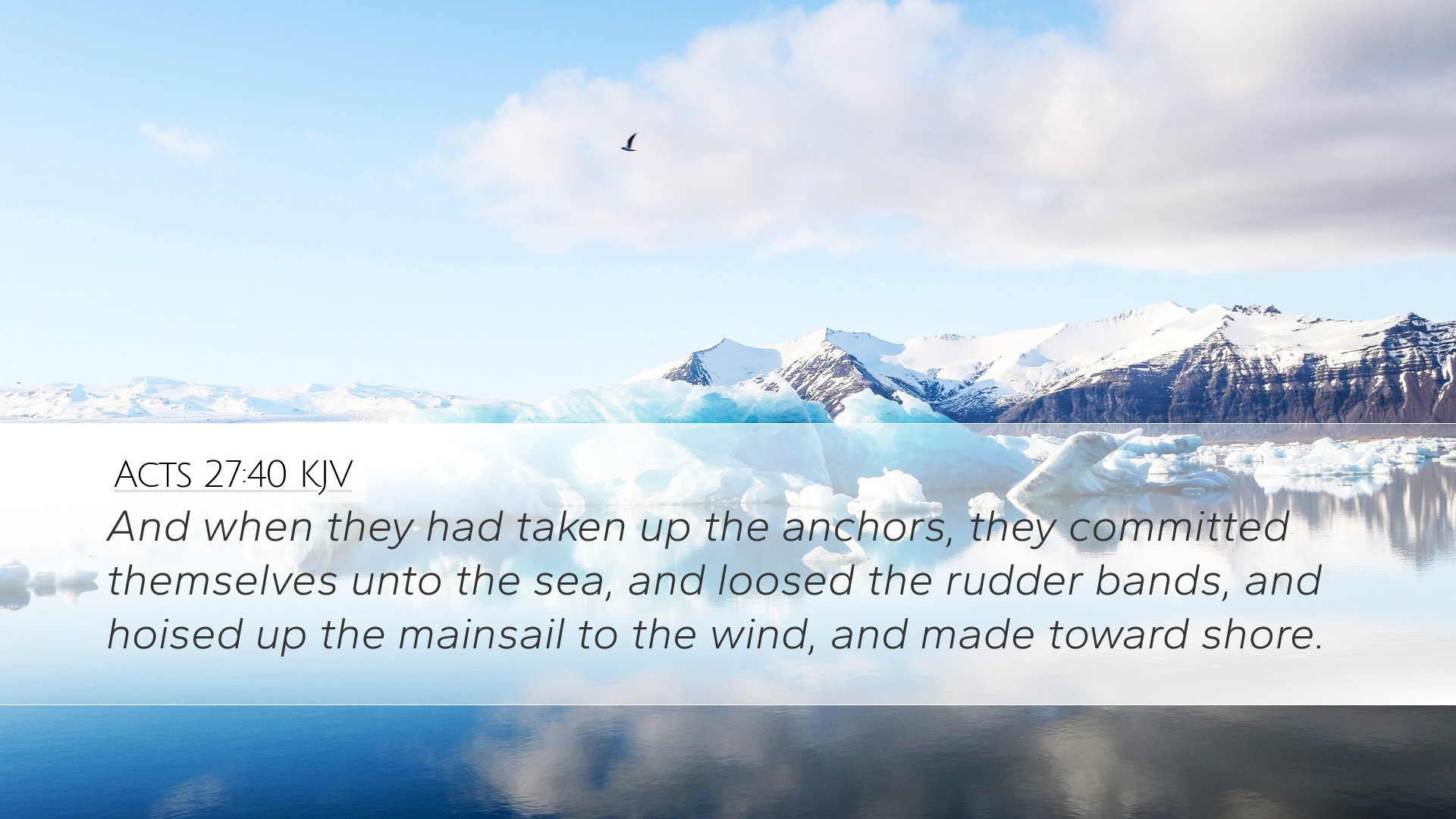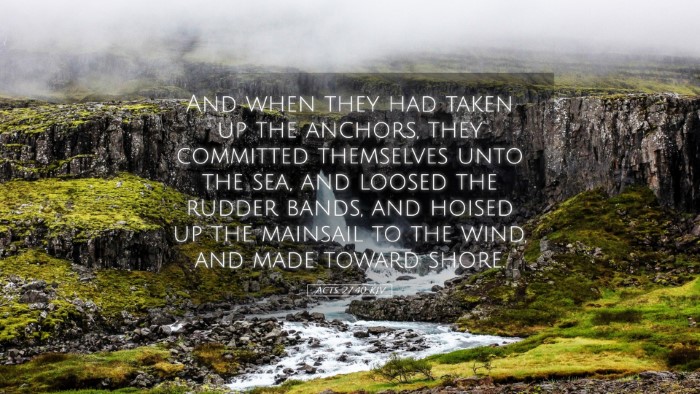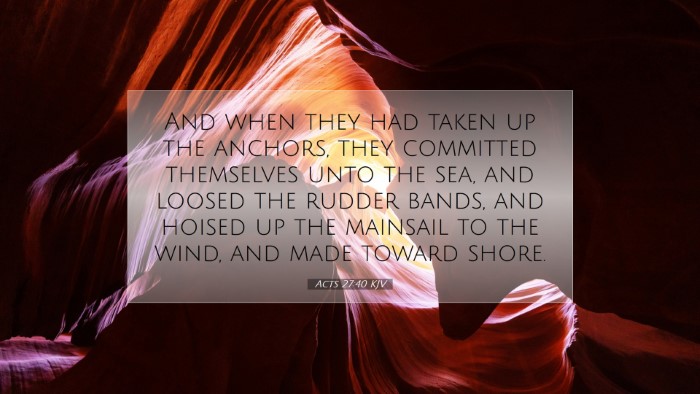Bible Commentary on Acts 27:40
Introduction
Acts 27:40 captures a pivotal moment during Paul's harrowing journey to Rome. The verse states:
"And when they had taken up the anchors, they committed themselves unto the sea, and loosed the rudder bands, and hoisted up the mainsail to the wind, and made toward shore." (Acts 27:40, KJV)
This passage can be seen as a metaphor for the transition from an uncertain situation to one of faith as the characters in the narrative place their trust in God amidst the turbulence.
Contextual Analysis
To fully understand Acts 27:40, we must examine the broader context of Paul’s voyage. Prior to this event, the ship encountered a fierce storm that had tested the faith and resilience of the crew and passengers alike. Paul, through divine revelation, had assured everyone that they would not perish, providing hope to the troubled hearts aboard. The verse in question marks a decisive act of faith and transition as they prepare to face the challenges ahead.
Maritime Imagery and Symbolism
The imagery in this verse—specifically, the actions of taking up anchors, loosing rudder bands, and hoisting the mainsail—can symbolize a few key themes:
- Risk and Trust: By taking up the anchors, the crew was abandoning their previous stability and security, demonstrating an act of faith. Matthew Henry suggests that in the Christian life, there are times when believers must "let go" of the anchors of security to pursue the vision God has placed before them.
- Preparation for Action: Loosening the rudder bands signifies readiness for movement. Adam Clarke emphasizes that such preparatory actions reflect the believer's readiness to embrace the direction God is leading, even amidst uncertainty.
- Seeking the Wind of God: The act of hoisting the mainsail indicates a desire to be moved by the wind. Barnes interprets this as a metaphor for seeking divine assistance, illustrating that believers must rely on the Holy Spirit's movement in their lives.
Theological Implications
Acts 27:40 invites reflection on several theological themes relevant to pastors, students, and theologians:
- Divine Providence: The unfolding drama of the storm and the shipwreck showcases God’s protective hand in the lives of believers. Even amidst chaos, God orchestrates events for His purpose, as highlighted by the previous verses affirming Paul’s divine mission.
- Faith in Action: The crew's actions illustrate the importance of faith that prompts physical response. The synergy between divine revelation and human action is crucial in the believer’s journey. Clarke notes that faith will often lead one into action, reflecting a trust in God's promises.
- Community and Shared Experience: The verse also emphasizes communal responsibility; the passengers joined in the efforts to approach the shore, symbolizing the Church's collective journey of faith. Henry remarks that the journey of faith often involves the participation and cooperation of fellow believers.
Practical Applications
In light of this commentary, several practical applications can be drawn from Acts 27:40 for modern-day leaders and believers:
- Embrace Change: Just as the crew had to let go of their anchors, believers are encouraged to embrace change in their spiritual journeys. This might mean stepping away from comfort zones or traditional ways of thinking to follow God’s direction.
- Be Prepared for Action: Faith should inspire action; it is not a passive state. Preparing oneself—spiritually, emotionally, and physically—is essential for advancing God’s mission.
- Seek the Leading of the Spirit: Like the sailors hoisting the sails, Christians are called to respond to the promptings of the Holy Spirit, allowing Him to guide their paths and decisions.
- Support One Another: The community aspect of faith is reinforced in this narrative. Pastors and church leaders should foster environments where believers can support each other through life's storms.
Conclusion
Acts 27:40 provides profound insights into faith during trials. The imagery of setting sail into the unknown embodies the essence of a believer's journey—risking comfort for the promise of divine guidance. It encapsulates themes of trust, preparation, and community, urging readers to act on their faith and to embrace the wind of the Spirit in their endeavors. By studying the interpretations of early commentaries such as those of Matthew Henry, Adam Clarke, and Albert Barnes, we gain a richer understanding of how to navigate our own journeys with faith and conviction.


